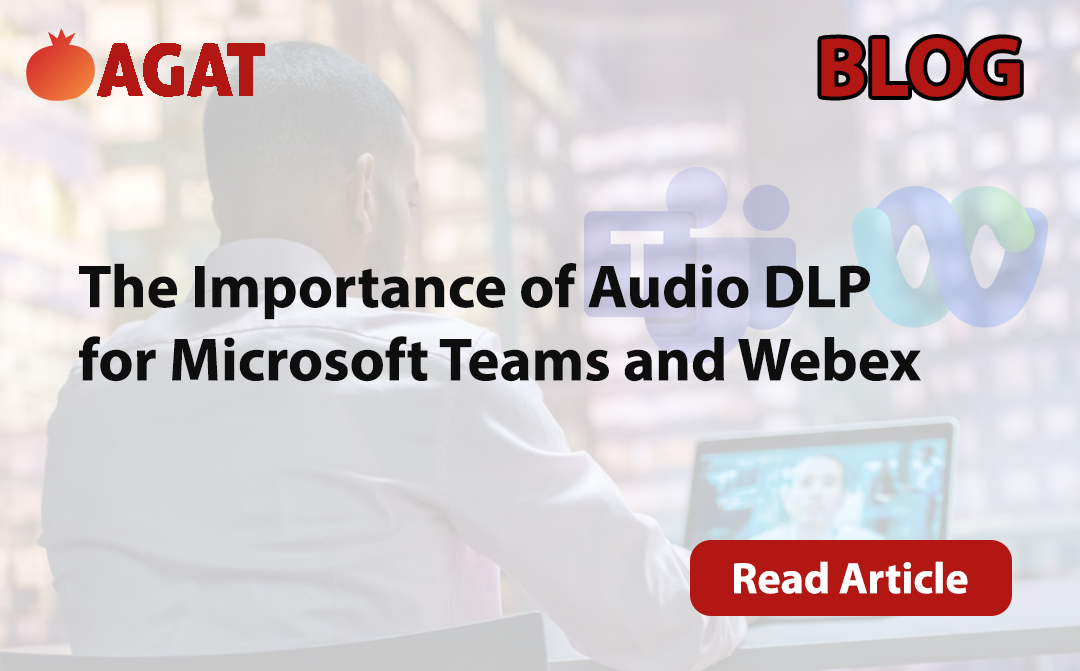Businesses are gradually discovering the value of being able to track audio discussions as workplace collaboration environments get more complicated. Regulators have also raised their expectations for governance and compliance standards in DLP discovery for Microsoft Teams and Webex.
Table of contents
- Data Loss Prevention for written content: the tip of the iceberg
- The limitations of manual voice call monitoring
- Compliance regulations and audio monitoring
- How to effectively apply Audio DLP for Microsoft Teams and Webex
Data Loss Prevention for written content: The tip of the iceberg
Organizations today are aware that they must guard against the malicious or unintentional disclosure of sensitive information while users are using collaboration tools such as Microsoft Teams and Webex. However, many continue to make the error of concentrating solely on written material when developing a plan for compliance and surveillance of electronic communications. DLP for written communication would include preventing sensitive data from being sent to the cloud or to external users in real time as well as gaining control over what users can share.
Despite the fact that text interactions have increased, many studies show that voice calling in Microsoft Teams and Webex continues to be the preferred way of communication for both consumers and organizations.
As a result, the majority of information exchanges take place via audio, and the figures increase even more if we take the amount of meetings held via video calls into account. In this situation, improper spoken content constitutes a serious compliance violation that can be avoided when the audio transcript stream is inspected by the Data Loss Prevention engine during conversation.
Relevant feedback is provided in real-time whenever a compliance issue is detected.
The limitations of manual voice call monitoring
Currently, personally evaluating random voice calls in MS Teams and Webex excerpts is the most thorough method of voice call monitoring.
This antiquated method makes audio reviews challenging and unreliable. First off, the proportion of communications that can be examined in this way is too low to be meaningful, frequently lacks context, and as a result, the majority of the risk is not documented. Secondly, manual reviewing requires a lot of time and effort.
Employees who act inappropriately turn to phone calls because they are aware that emails and instant messages are being monitored. Even they are aware that this is a compliance blindspot.
Compliance regulations and audio monitoring
Businesses are being urged by regulators to upgrade their voice data inspection processes. Because of this, businesses follow sophisticated governance and compliance frameworks. Audio communication monitoring is becoming more and more popular, particularly for businesses in highly regulated industries like finance and healthcare.
One crucial aspect of overall compliance with MiFID, for instance, is the periodic monitoring and recording of every client call when they place orders or conduct transactions (legislation for financial services providers within the European Union).
Another illustration is the Financial Conduct Authority (FCA) of the United Kingdom, which has reaffirmed the requirement for firms to record all audio and video interactions, regardless of source or technology, with a focus on home offices and hybrid workplaces.
Call recording and surveillance regulations that apply to regular voice calls, emails, IM, and other electronic communications, also apply to united comms platforms.
Audio Data Loss Prevention
These realities lead us to the conclusion that manually sifting through millions of calls to find sensitive information is a bad idea. DLP software can significantly lessen the workload in this area.
With the help of AGAT’s Data Loss Prevention for Webex and MS Teams, words are recognized and conversational context, sentence structure, and keywords are examined. In this manner, the DLP engine can identify the sharing of sensitive data.
Because AGAT’s DLP solution for MS Teams and Webex operates in real-time, it is able to do more than just automatically analyze audio; it can also identify issues right away and notify the user of policy rules using feedback popups.
See how it works:
In order for businesses to comply with required risk assessments, conduct audits, and provide staff training, the Data Loss Prevention for Webex detects policy violations after the meeting and notifies users of DLP events.
Businesses may ensure that their staff members are following best practices by using powerful speech analytics tools like AGAT’s DLP, which allows them to keep an eye on their conduct during calls.
Contact us today to get a free demo
























